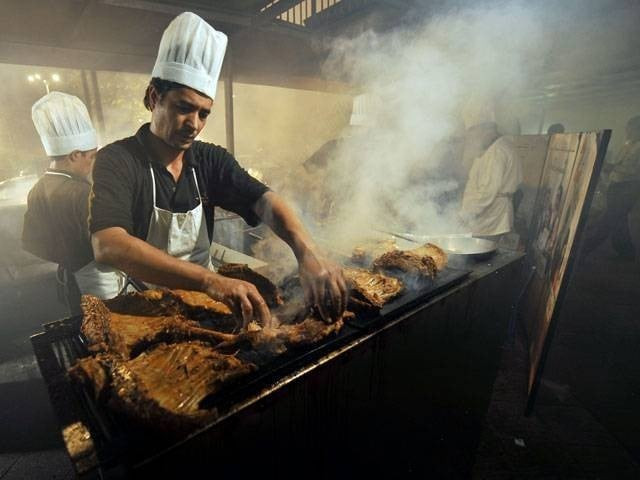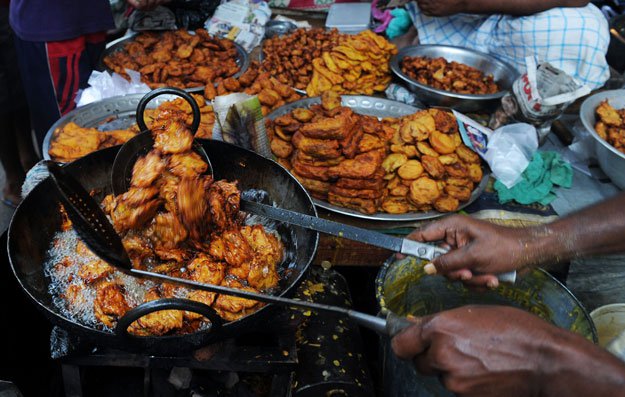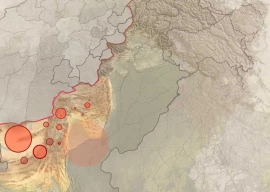
The supremes and kings of southern Hindustan were as fond of royal meal as the ones living in the north and their kitchens were exemplary when it came to preparation of delicious and nutritious food, BBC Urdu reports.
The royal supervision and abundance of resources facilitated the talent and skills of royal chefs. In this regard, stories of royal kitchens of Mysore, Arakanta, Travancore and Tanjore are interesting and enjoyable.
Eoul - experiment by a Missourian chef
The tale of a feast arranged by the treasurer of royal court at Mysore is one such example. The chefs would begin preparing meal at dawn.
Minutes before the dinner, the treasurer visited kitchen and saw a basket lying in the kitchen corner with scraps of vegetables. He inquired the chef about the leftover and was told that the scraps had been discarded. And all of a sudden the treasurer asked the chef to invent a dish from those scraps.
After a few moments of anticipation, the chef was able to prepare a mix of desiccated coconut and curd. He also spiced the scraps of vegetables and cooked them in coconut gravy on low flame. The meal was successfully prepared in time and presented to the guests.
The guests relished the invention and inquired about its name, to which the chef answered gleefully 'Eoul'. Since that day, Eoul has been gracing the royal tablecloth and is known as one of the most delicious meals in northern India.
Rani Situ Parvati of Tancove
Trancove is a state of southern India. Abundance of resources and supervision of food-loving kings and princesses have made its royal kitchen equally famous. The much celebrated royal meals of Trancove are a result of hard work and dedication of Queen Situ Parvati Bais.
7 foods to help you look younger
Parvati Bai was the mother of prince Raja Pal Ram Verma. Not only was she fond of delicious food but the meals prepared under her supervision were appreciated by all. Numerous tales relating to the meals prepared by the queen were popular among the people of royal court, which they enjoyed listening. The queen was widely known as "Wa Amma" (mother Queen).

Mother Queen used to instruct the chefs herself and was used to supervise every single meal within the royal kitchen. Meals, especially those with milk as main ingredient, were particularly prepared in the royal kitchen. Curd processed by the queen was known to be exemplary while she was also a great host.
Artists, scientists, musicians and government authorities of the 20th century were among the privileged ones to be a part of the feasts arranged by the queen. Whoever tasted those meals, craved for more. The mother Queen treated every person in her kitchen as a special guest regardless of their orientation.
Interestingly, the queen herself was a vegetarian and abstained from eating meat, fish or poultry products but the royal tablecloth was always adorned with nutritious and delicious cuisine of all kinds.
Meat products were usually prepared in a separate kitchen and served with carefully prepared drinks to the guests. Drinks along with platters of delicious food were thought of bringing the feasts at the Missourian royal court to life.
The members of royal family were all vegetarian and would only have water instead of other drinks. It is believed the tradition of two separate kitchens, a principle introduced by the queen, is still followed in Mysore. South Indian vegetarian meals are prepared in one kitchen while meat dishes are prepared in the other.









1728386780-0/BeFunky-collage-(38)1728386780-0-270x192.webp)








COMMENTS
Comments are moderated and generally will be posted if they are on-topic and not abusive.
For more information, please see our Comments FAQ